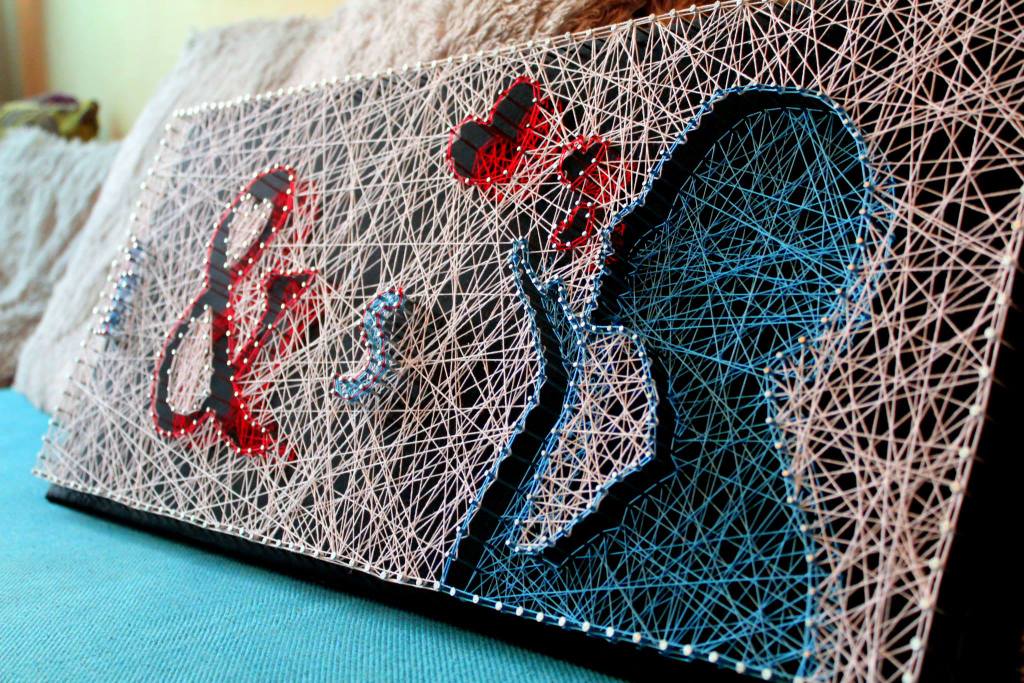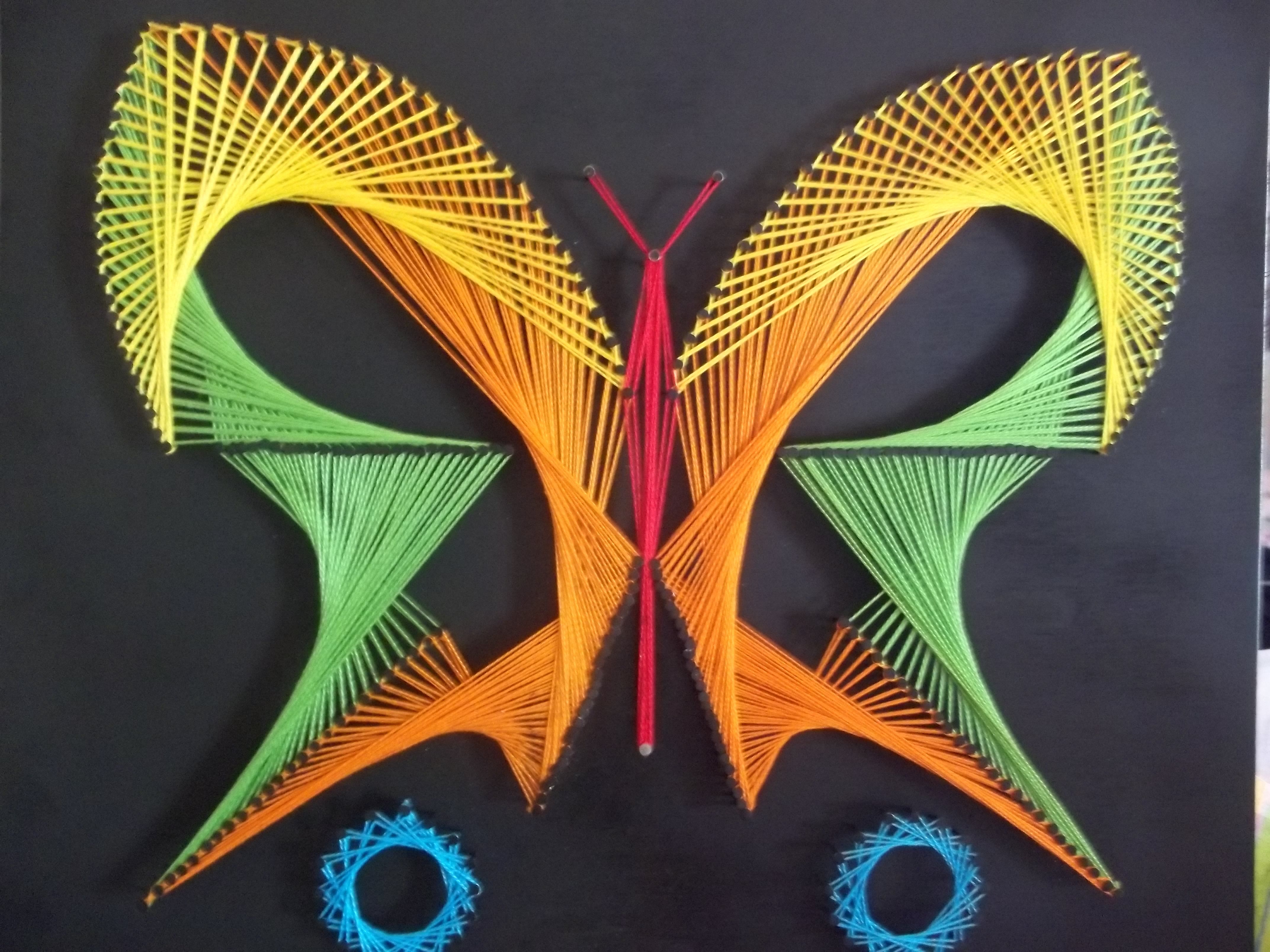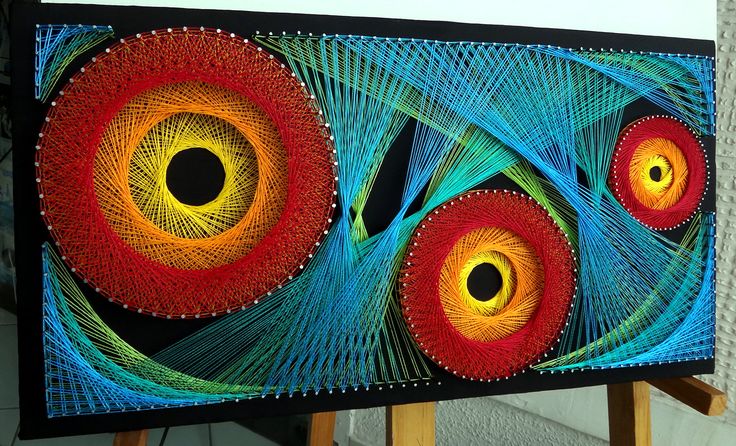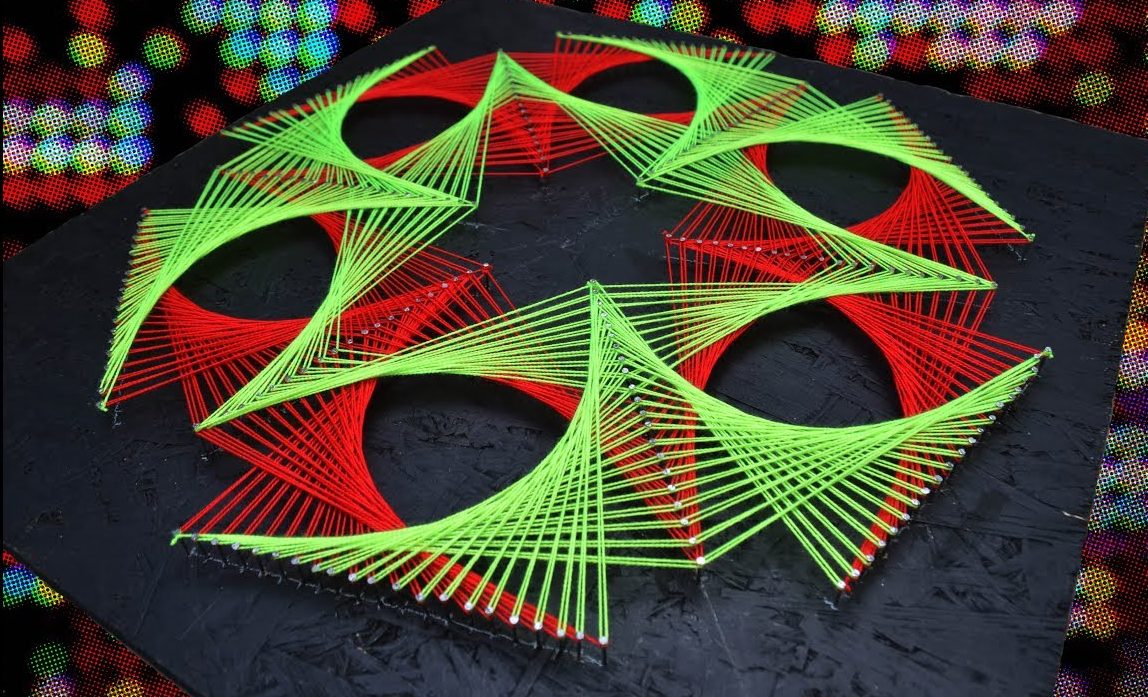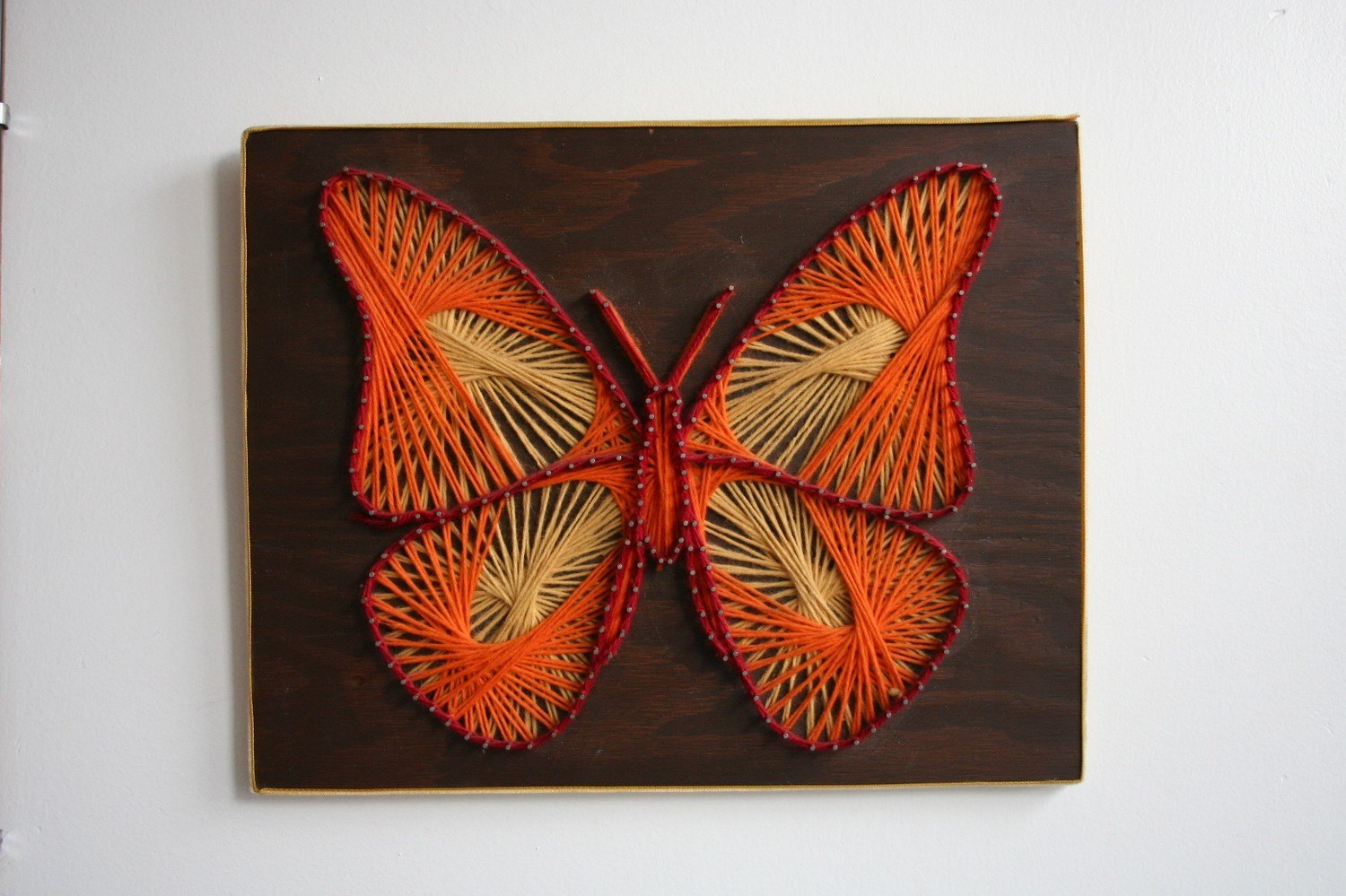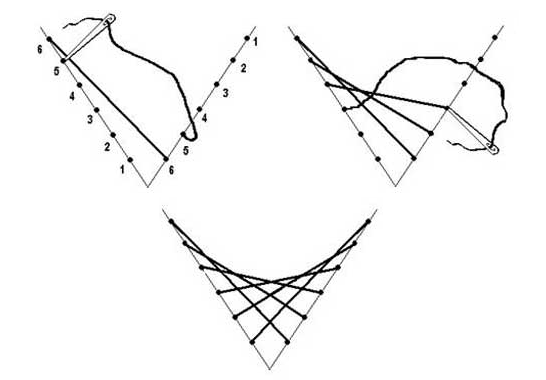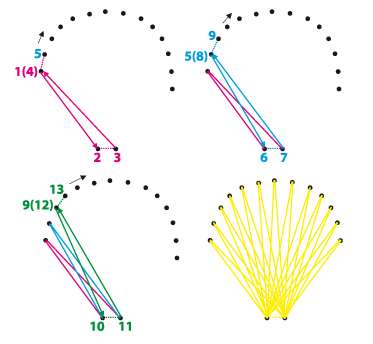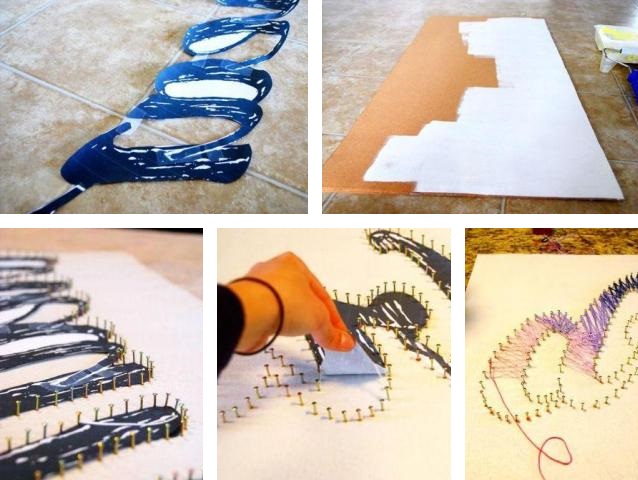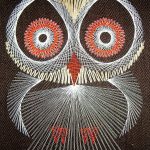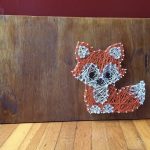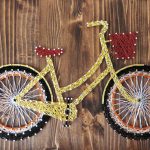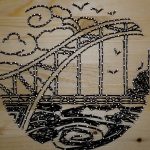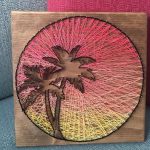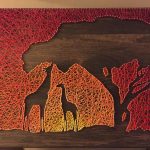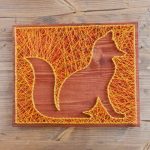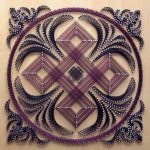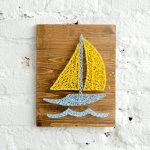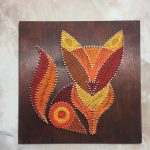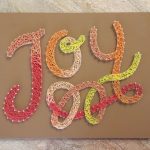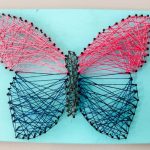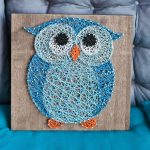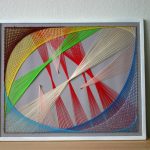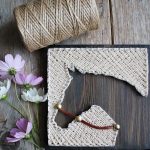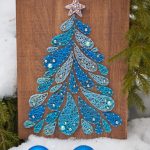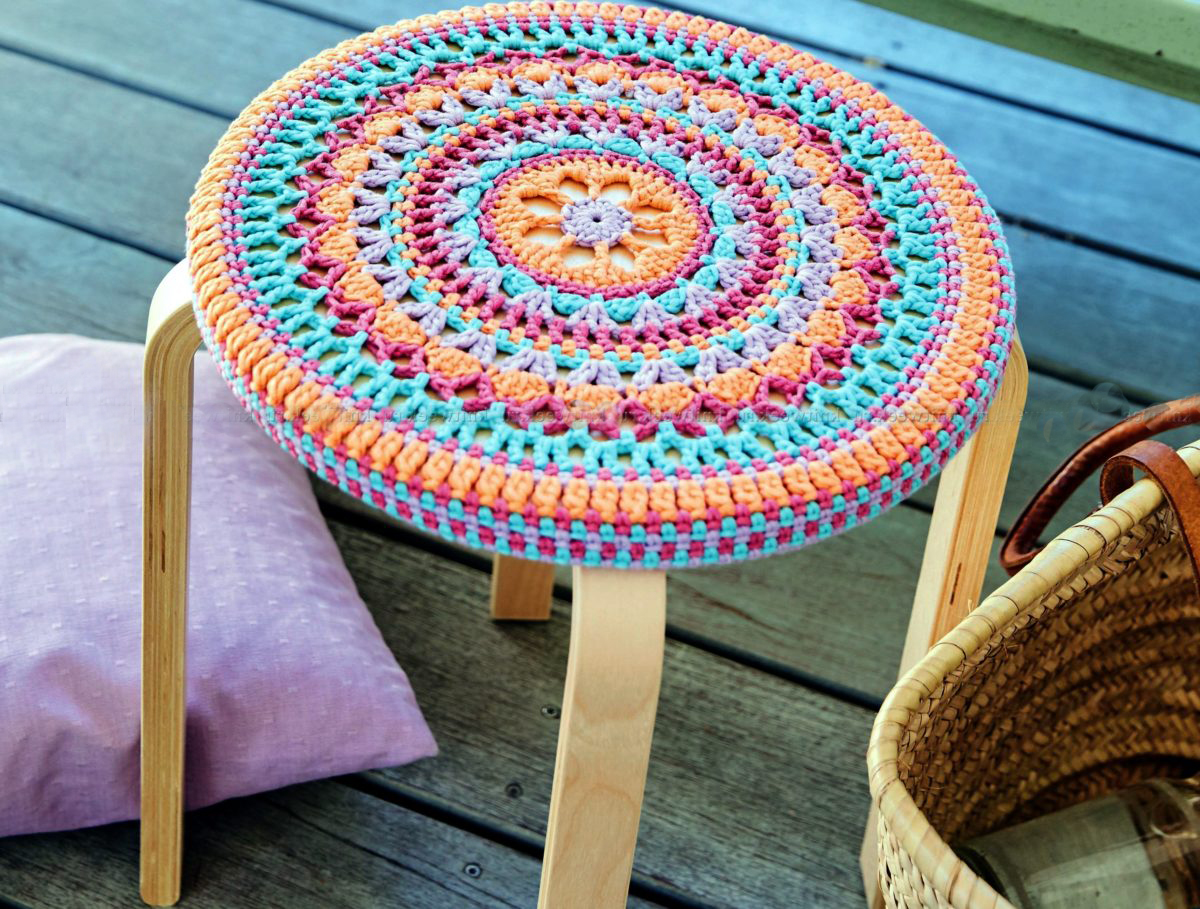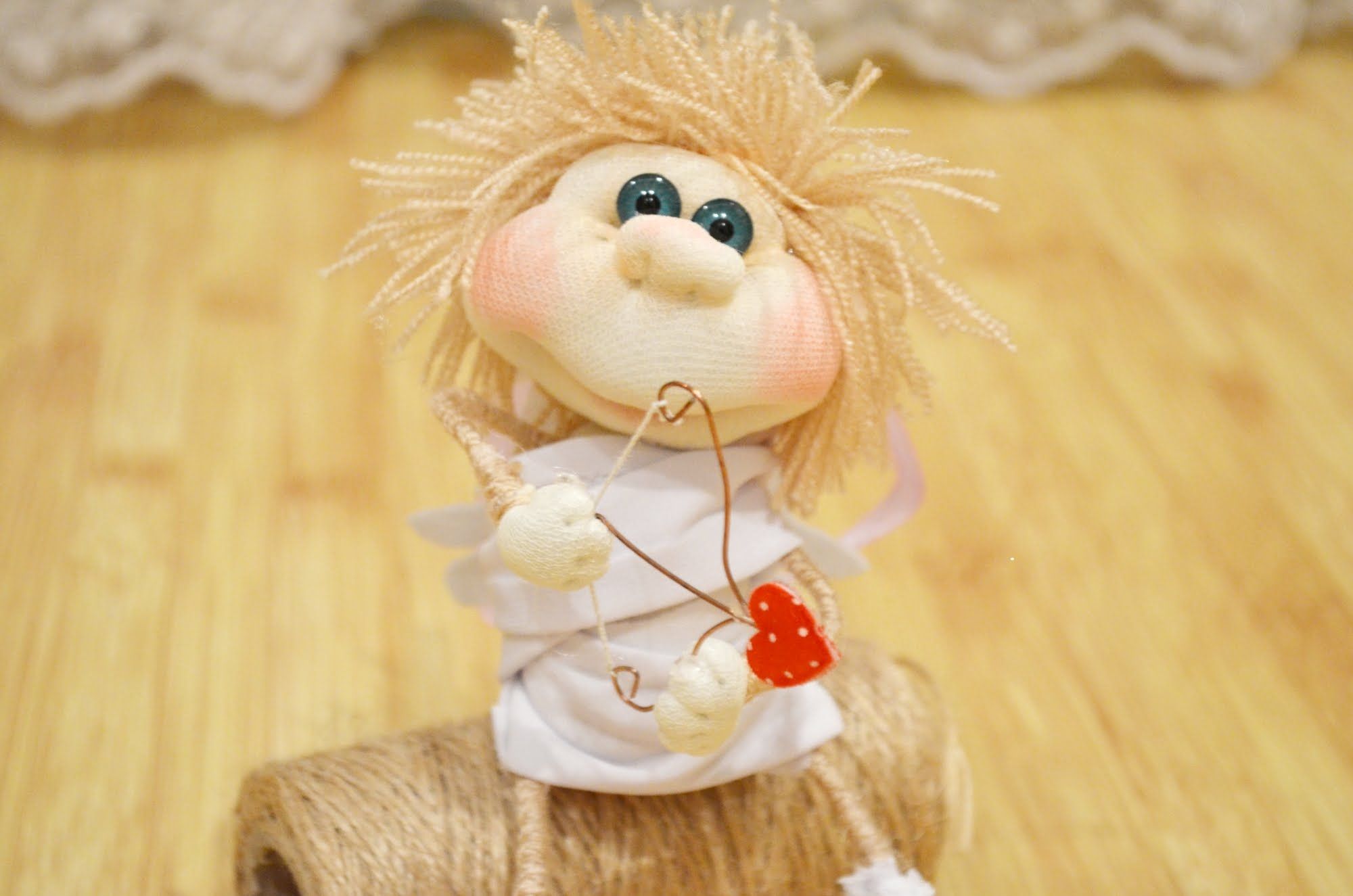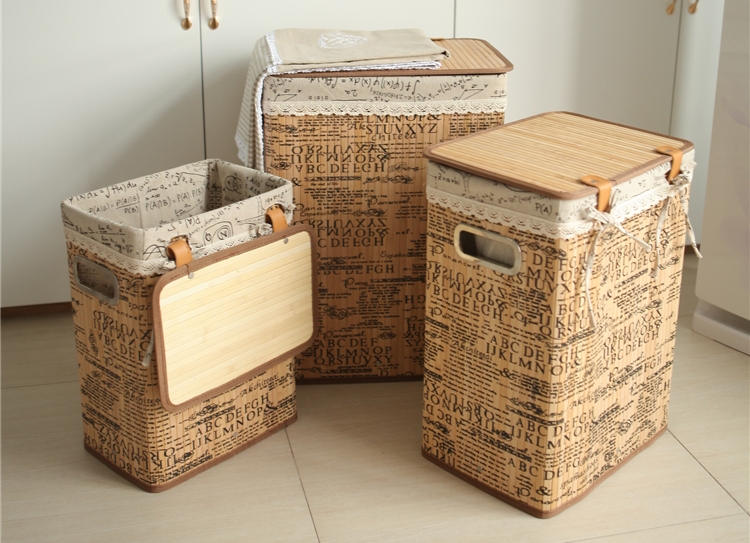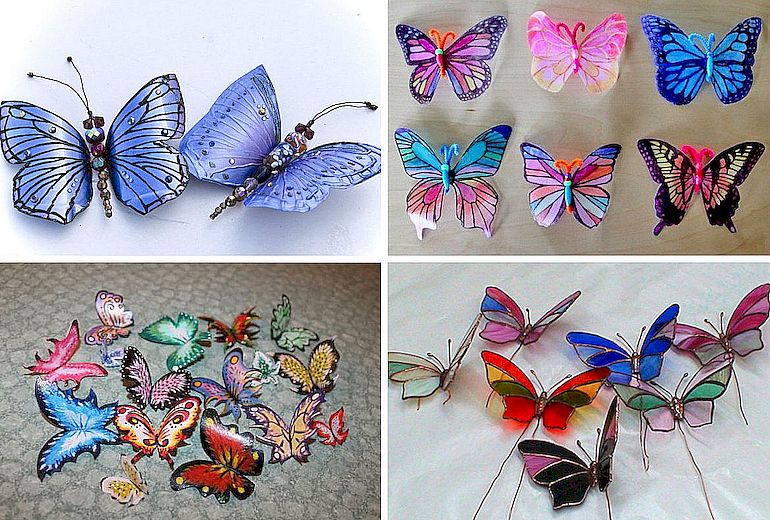Today, various types of hand-made crafts have become widespread. Unlike the usual knitting, embroidery or sewing, string art is an unusual and interesting type of handicraft. When used skillfully, simple nails and threads turn into luxurious three-dimensional paintings. The string art technique is quite simple, so anyone can master it.
Features of the technique
String art is a form of art in which various images, simple or complex, are created from threads and nails. The pictures consist only of straight lines, but despite this, three-dimensional drawings are obtained. At first glance, it seems that the main feature of the string art technique is the usual intersection of threads stretched on nails. In fact, to obtain beautiful patterns, you need to be careful. This is painstaking work that requires preliminary calculations.
The word "string" is translated from English as "stretching", "string" or "rope". Art is a thread art, and isonit is embroidery on various hard surfaces. String Art is already an interweaving of threads on nails.
The history of this handicraft began about 4 centuries ago. It was invented by English weavers, who in a certain sequence pulled threads on nails driven into boards. As a result of the work, panels for decorating rooms were obtained. At the end of the 19th century, Mary Boole, a mathematician and researcher, became interested in the technique, improved it and used it to teach children, depicting various geometric patterns.
Modern string art has gained popularity thanks to the American designer John Eichinger. The mandalas he created amaze the imagination with the elegance of lines and unique optical illusions. At the moment, the popularity of unusual paintings made using the string art method is only growing.
String art pieces fit organically into modern interior design, especially in modern, high-tech and classic styles. Original decor in the form of names, silhouettes, logos, flags, patterns, animals looks fresh and bright.
Main directions
There are many string art techniques that allow you to create original paintings from threads and nails. The most popular methods include:
- Letter design. A well-known trend developed in the West. Various words look interesting in the interior. Despite the use of sharp nails, pictures made in the string art technique can look gentle. Such decorations are relevant for use in the hallway or living room.
- Animalism. Often, craftsmen create silhouettes of various animals and birds. This trend in string art is more relevant today than ever. Images of graceful deer, noble horses, spectacular zebras, and majestic elephants are popular.
- Portraits. People who are professionally involved in string art create stunning large canvases in which facial features, such as those of celebrities, are easily recognizable.
- For children. It is useful to do string art together with your child. Kids will be able to cultivate perseverance, attention to detail, and develop fine motor skills. In this case, foam plastic is used as a base. Popular children's patterns in the string art technique: cats, fish, dolphins, hearts, and others.
- Additional decor. When creating compositions, various types of decorations are used: different colors, identical pictures with a contrasting shade of nails, rhinestones, beads, rivets.
To make an original key holder, just take a small board, attach several hooks to it and decorate it using the string art technique. The composition will be decorated with a key or a tree, various inscriptions.
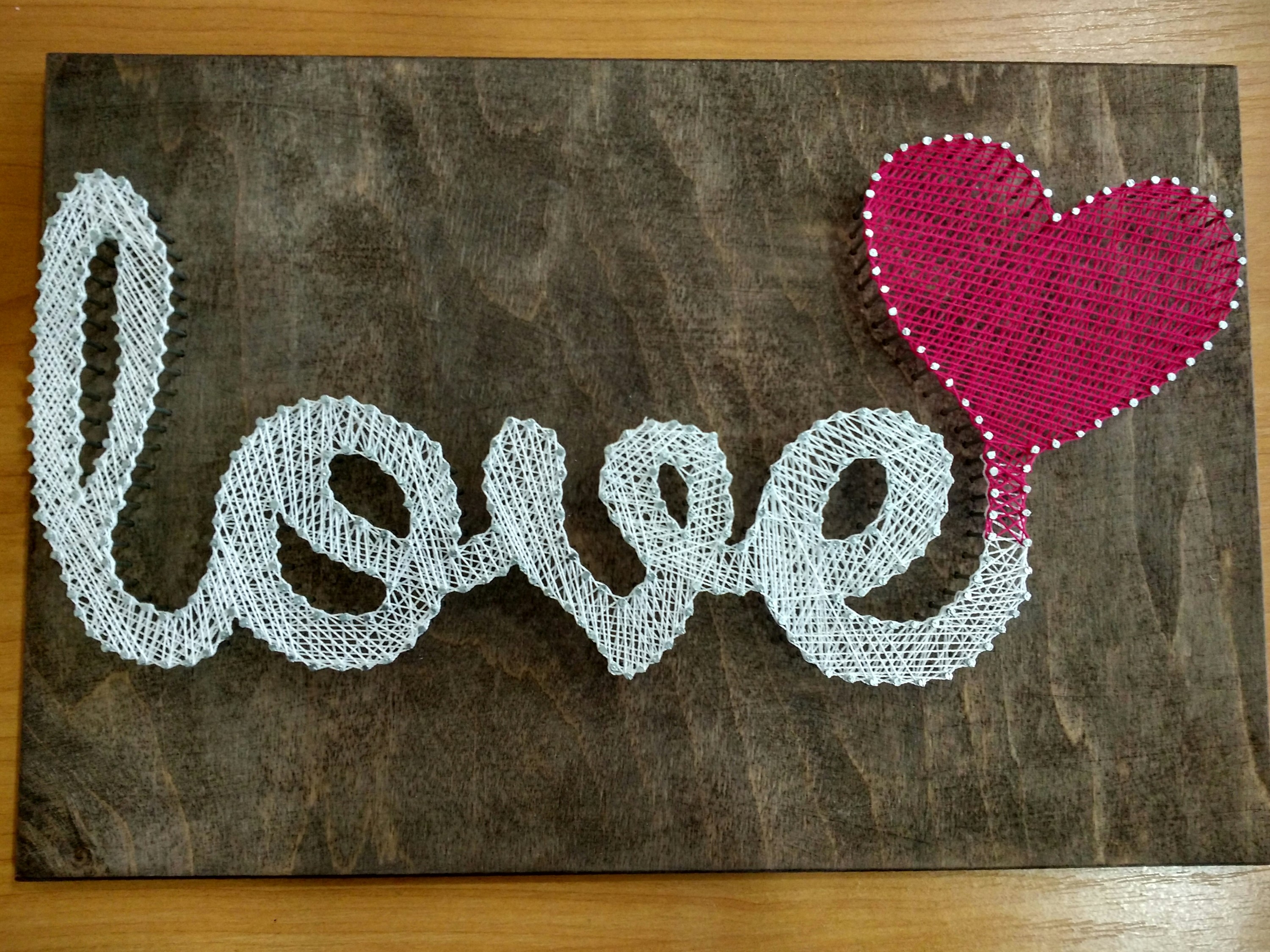
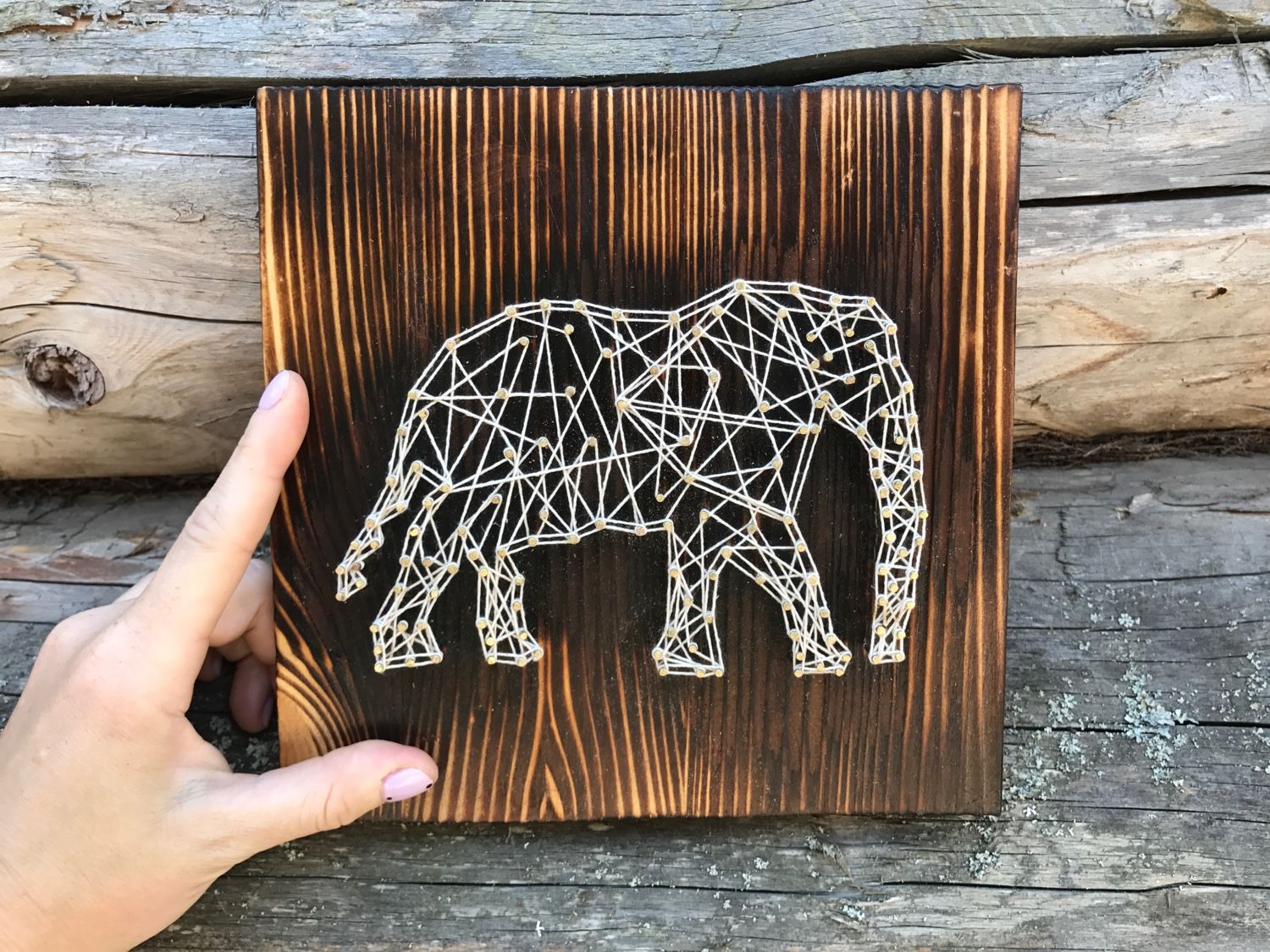
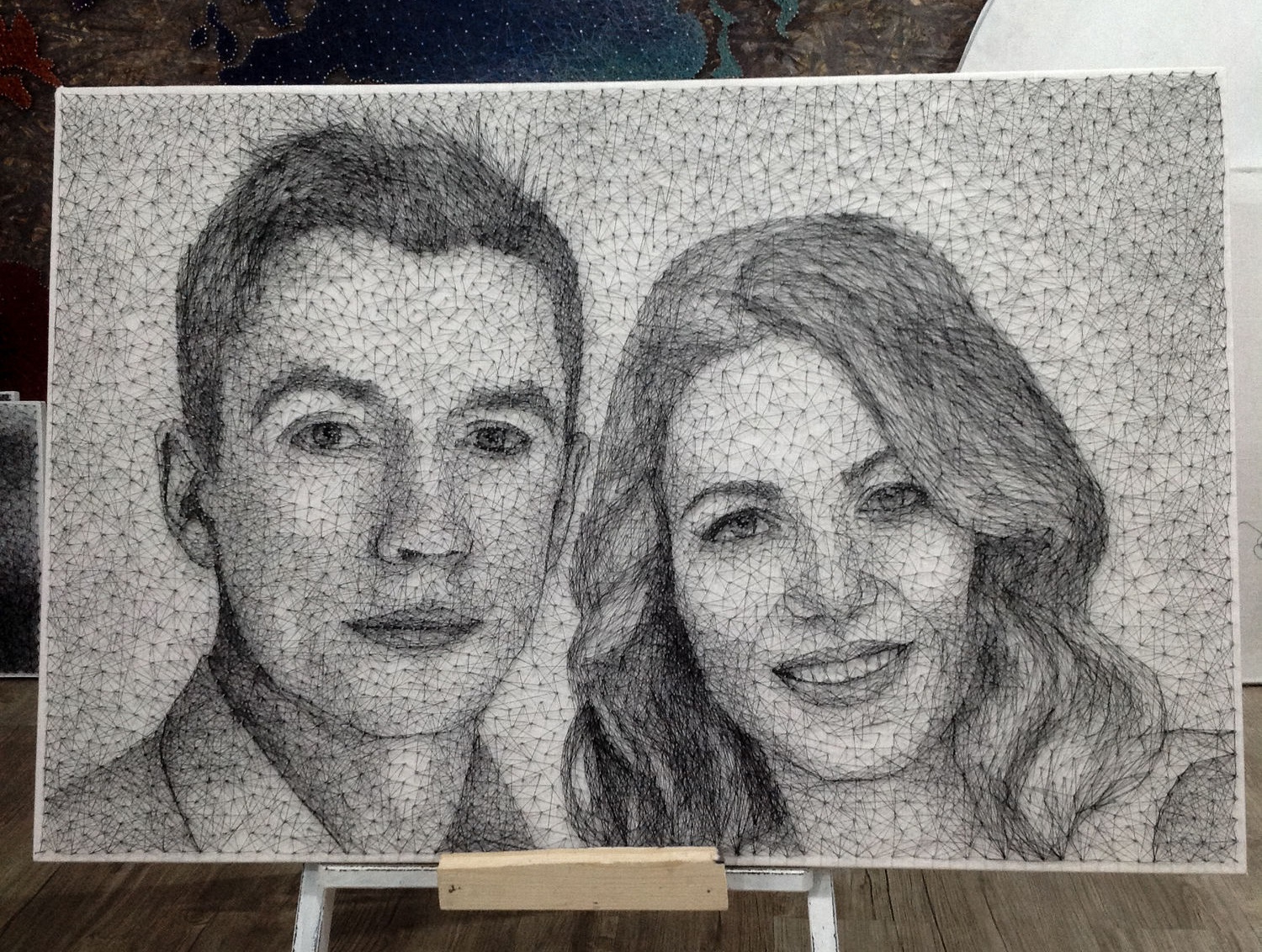
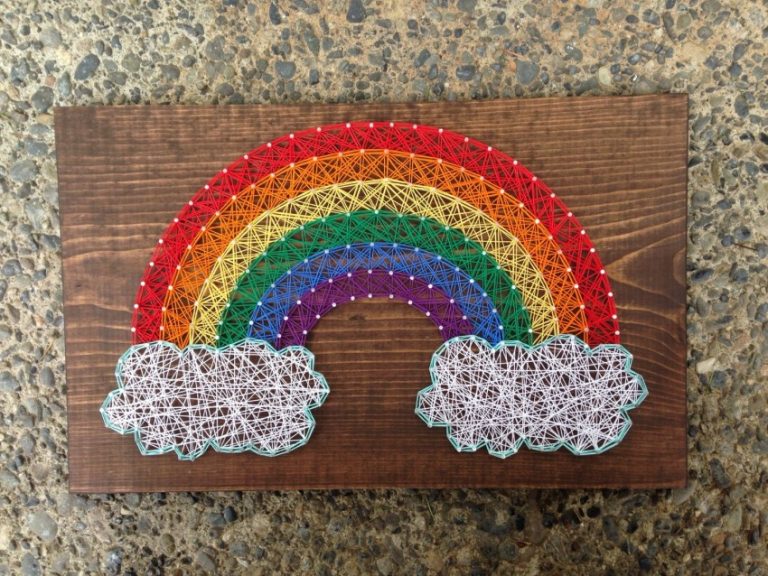
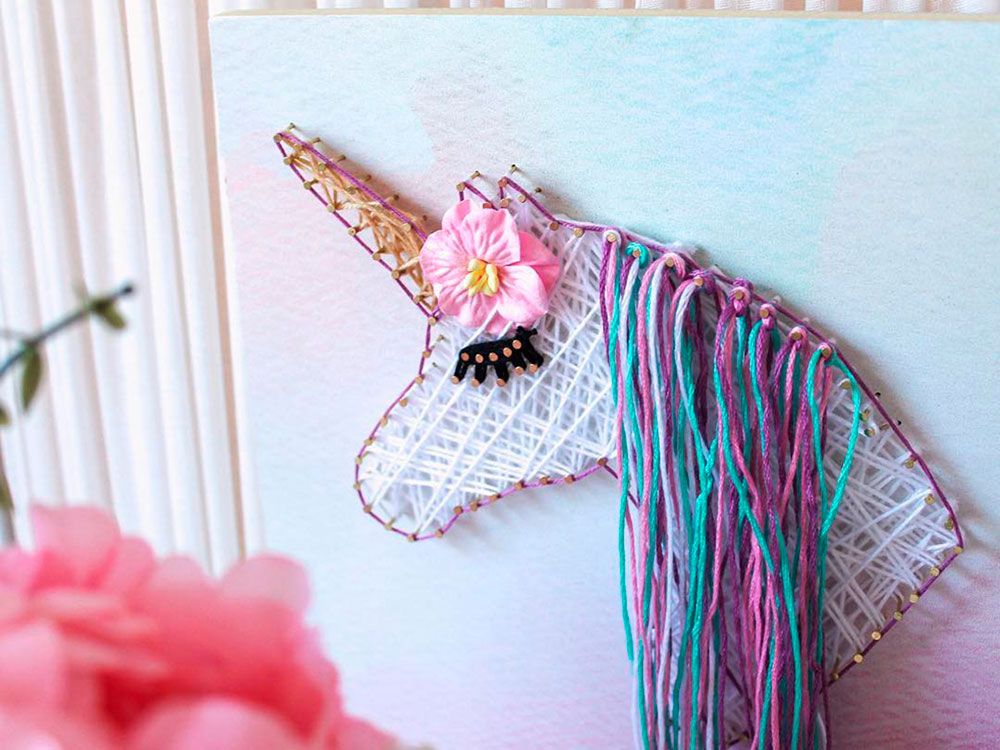
Materials and tools
To perform string art weaving, you need to prepare tools and materials. First of all, select a base. This can be a small board made of plywood, fiberboard or cork. Such substrates are optimal for working with the string art method, since their surface is conveniently covered with tinting, paints, varnish or film.
A good option for working in the string art technique is a foam base, which is suitable for applying acrylic paints. But in this case, it is necessary to replace the nails with pins.
The number of nails should be sufficient to create a picture using the string art method. It is worth giving preference to furniture, decorative and carpentry varieties. Their main advantage is the small size of the products themselves and the caps. As for the threads, knitting ones are ideal for working in the string art technique: floss, twisted, thin iris. Silk yarn constantly slips out, so it causes inconvenience when weaving.
If you are using the string art technique for the first time, you should not take on complex images. It is better to start with the simplest options. The ideal solution would be templates with numbers, where each thread movement and type of connection is marked with special arrows. To work on a composition in the string art style, you will also need other tools:
- pliers;
- hammer;
- scissors;
- buttons;
- a clothespin for fixing nails.
Experienced masters advise using a ballpoint pen body for this kind of unique drawing. The rod is removed and a thread is inserted instead. This method ensures uniform tension and ease of work.

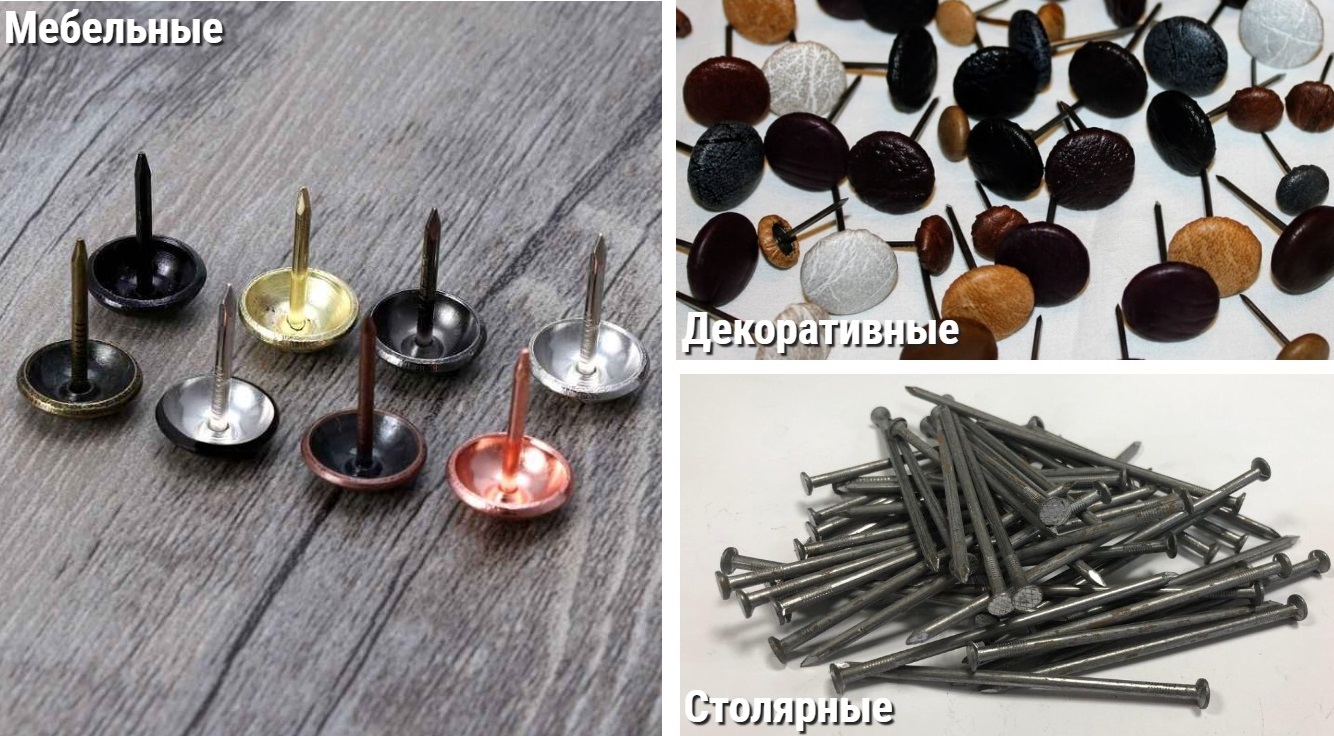


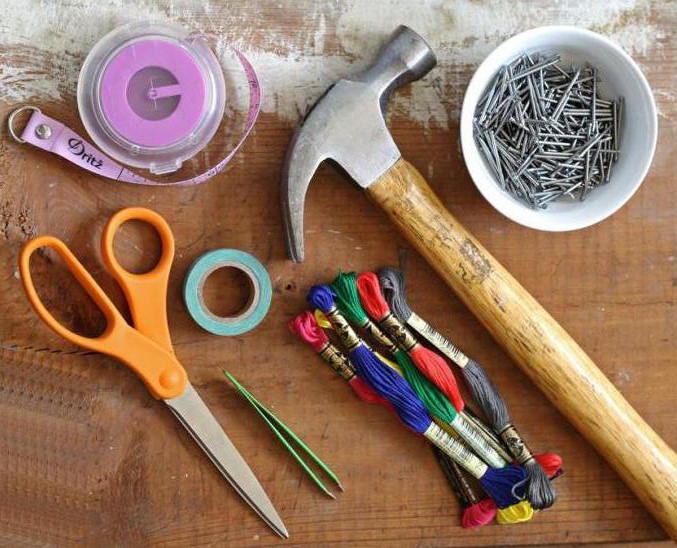
Stages of work
To create an attractive composition in the sting art style, you need to choose a suitable drawing, think over its size and color. The actions are carried out in stages, following the recommendations of specialists.It is important for beginners to take their time while working to avoid mistakes.
Applying a design to the base
After preparing the materials, you can start working. In order to apply the selected design to the base, follow the instructions:
- Create your own template or print out a ready-made one.
- The diagram is applied to the prepared substrate.
- If the base is soft, the contours are marked with a needle; if it is hard, nails are driven in.
- The sample is deleted and will no longer be needed.
If necessary, you can fix the template with masking tape. Then it will not move during further work. This is especially convenient when doing string art with children.

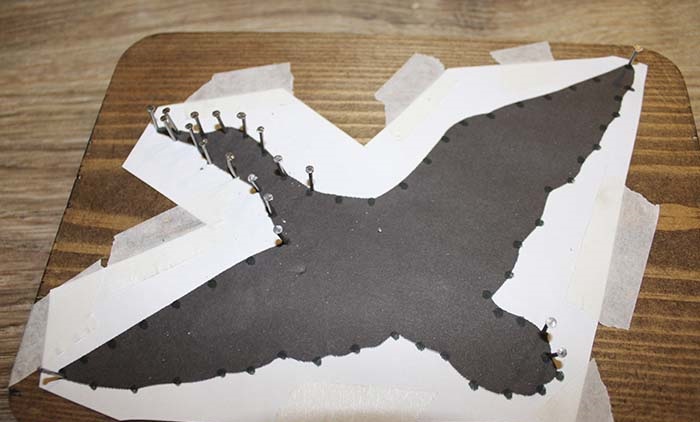
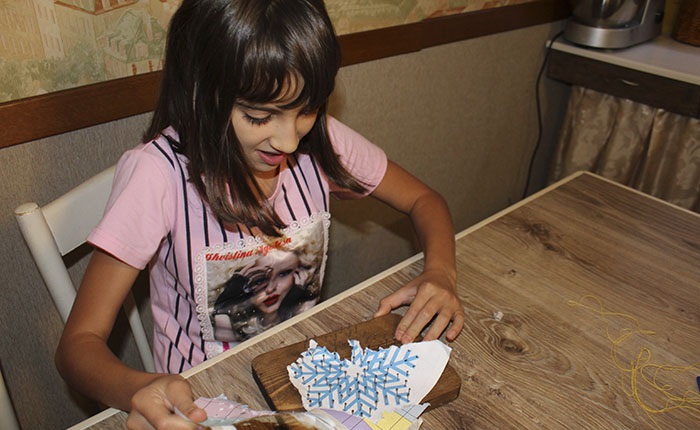
Driving nails
To work in the string art technique, you will need a small hammer. The actions are performed step by step:
- Nails are carefully driven in around the perimeter; you can start from any area.
- To protect your fingers from damage, hold the product with pliers or a regular clothespin.
The nails are driven in at a distance of 1 cm. You should leave a length that will be convenient for winding the threads. The more voluminous and multi-layered the template, the higher the driven nails should stick out.
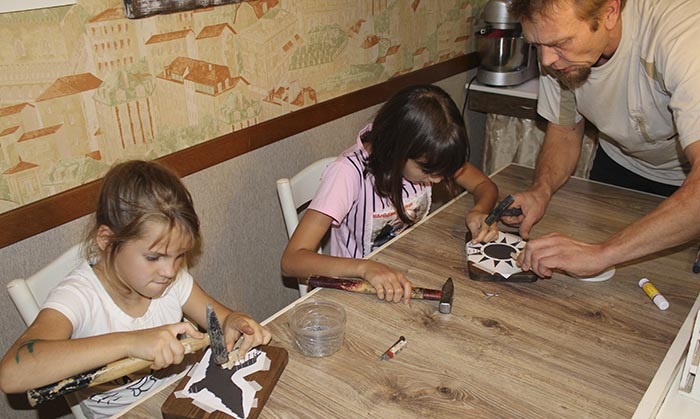

Filling the space with threads
The same sketches in the string art technique can look different. After placing the nails, the threads fill the drawing itself or the surrounding space, the background. This is done as follows:
- The first thread is tied to a nail and the creative process begins.
- When it is necessary to change the color, a knot is tied to fix the pattern.
- Once the work is completed, all excess ends are cut off.
If a thread breaks, it is necessary to carefully tie it and continue creating. When creating complex multi-layered compositions using the string art technique, it is important to adhere to a certain sequence, due to which a three-dimensional effect is achieved. In other cases, chaos is welcomed.

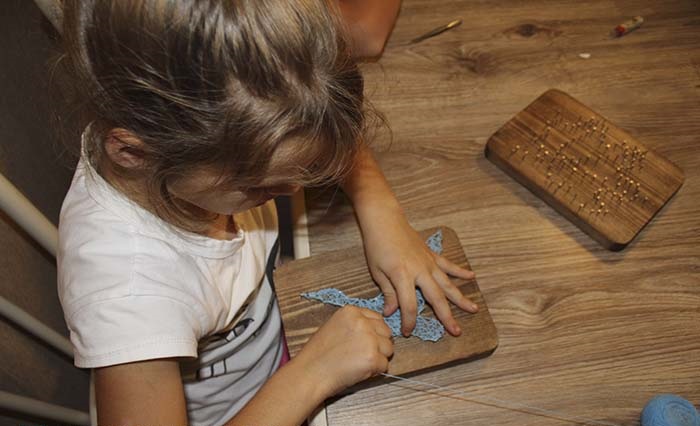
Edging the picture
Finished figures filled with threads are often decorated with edging. The color can match or contrast with the main elements. The finishing is done along the outline of the drawing, to outline the borders, to give the picture a neat appearance. Blue letters, for example, will be perfectly decorated with a yellow border.
Basic techniques for beginners
For your first acquaintance with the interesting technique of string art, you should not immediately take on complex compositions. It is better to start with the simplest techniques, using one color. When choosing, it is worth paying attention to special stencils, in which each number indicates the sequence of actions and the type of connection. They are used to practice basic movements, allowing you to move to a new level of skill. Beginners are recommended to fill in corners and circles, other shapes are derivative, so they are much easier to master.
Corner
To work in the string art technique, you will need a ruler. Then all manipulations are performed according to the instructions:
- An angle is drawn on the backing, obtuse, right or acute.
- The figure is divided into equal zones, where paired holes are created. The top remains free.
- The thread is threaded from the wrong side, according to the selected pattern.
Filling an angle cannot be done in such a way that opposite points that are located at the same distance from the vertex are connected.
Arc
This string art pattern is used for floral ornaments. It is not difficult to make. Just follow the instructions:
- A part of a circle is drawn.
- The holes are connected with a thread in such a way that the distance between them is less than half the arc.
- Equal spaces are left between the holes.
Drawing using the string art method is done strictly in one direction.
Circle
To complete the work, you will need a compass and an awl. A similar element of string art for beginners is made according to the instructions:
- A circle of the required dimensions is drawn. A small diameter is preferable.
- The holes are arranged in the same way as the numbers on a clock face, there will be 12 of them in total. The holes are numbered.
- Thread a thread through hole #1 and pull it through to hole #5.
- Connect holes #2 and #6, then #3 and #7, and so on in the same way.
You can connect other points according to the chosen schemes. The only rule that cannot be broken in string art is that the distance between the holes should not exceed the diameter of the circle.
Circle
This technique is required to create beautiful flowers using the string art technique. The figure is made as follows:
- An arc in the shape of a fan and a small segment are drawn.
- The marks are placed at equal distances from each other.
- The holes on the arc and the segment are connected.
The string art method allows you to make flower petals, leaves, buds. The result is a real floral composition that can decorate any room.
Master class for beginners
String art can sometimes be difficult for beginners. Step-by-step instructions will help you avoid them. The simplest figures to make using the string art technique are: a car, a letter design, and a fox.
Car
First of all, the base is selected. A small board measuring 15 x 20 cm will do, the corners can be rounded. The surface is sanded and covered with varnish or stain. Threads, a hammer, scissors, pliers, and masking tape are prepared. All actions are performed step by step:
- A car is drawn on a clean sheet of paper, or a ready-made stencil for string art is printed out.
- On the picture, dots are placed at equal distances in the places where the nails are located.
- The sheet is attached to the backing with masking tape and nails are driven in. After that, the picture is removed.
- A thread is tied on the top central nail, the tip is pulled diagonally, hooked onto the next element and so on.
- When all the nails have been processed, the thread is tied and cut.
In the same way, you can make a heart, maple leaves, snowflakes and other pictures. If you follow the instructions exactly, you can achieve an excellent result.


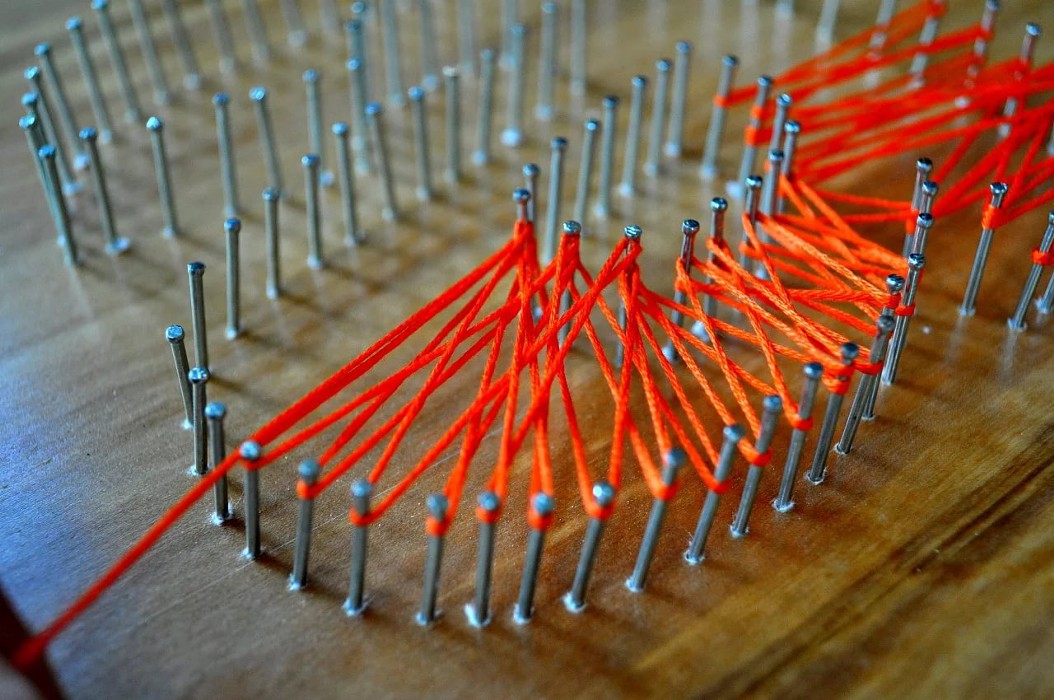
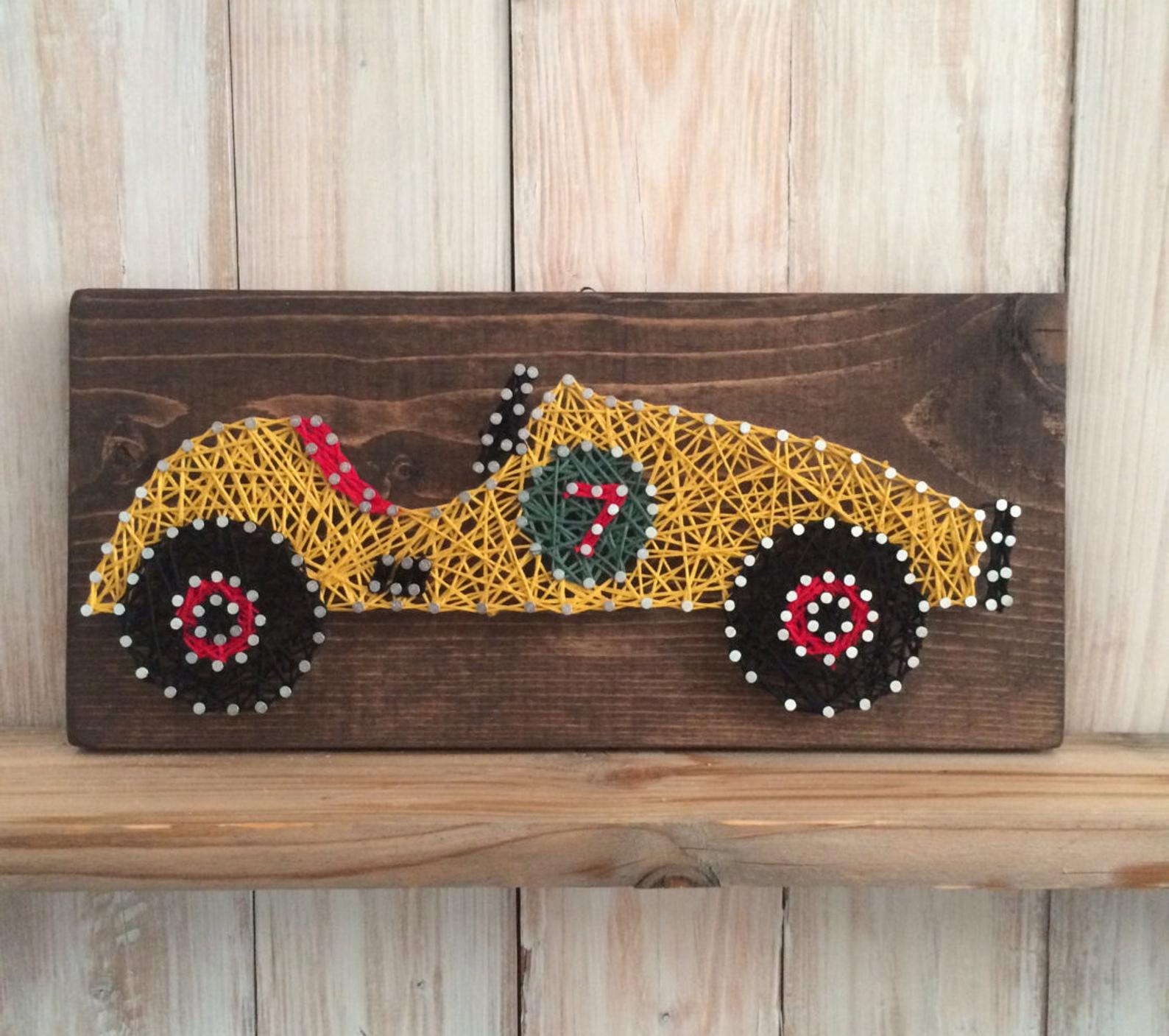
Letters
The work requires a standard set of tools and materials. The master class will help you make an original composition using the string art technique:
- The base is sanded, painted in the chosen color. A suitable word, catchphrase or logo is selected.
- The letters are printed or applied to paper.
- The template is fixed in the central part of the substrate. Nails are driven in along the contour at equal distances from each other.
- The paper is removed. The thread is secured under the nail head and passed to another. This must be done until the elements are completely filled.
- The work is completed by fixing the thread and cutting off the ends.
The letters can be used as decoration for photo shoots, themed wedding ceremonies or living spaces.When hammering nails, it is recommended to put something under the baseThis will protect the surface of furniture and floors from damage.
Fox
A cute fairy-tale animal associated with cunning and ingenuity will be a great decoration for your home interior. To make it using the string art method, you need to perform several manipulations:
- A board or piece of plywood of a suitable size is sanded and covered with paint and varnish.
- A drawing is selected. It can be a fairy-tale fox in its entirety, its head, or a geometric picture.
- The image is applied to the backing and nailed along the outline. The paper is removed.
- The space between the nails is filled with threads, you can use several colors.
The red fox will be an ideal decoration for a living room or a child's room. You can make such a decorative element using the sting art method together with your children.
Paintings made using string art technique look luxurious. They are suitable for decorating modern interiors and can be an ideal gift for loved ones. The work is useful for children, since string art develops fine motor skills, abstract thinking, and a sense of beauty.

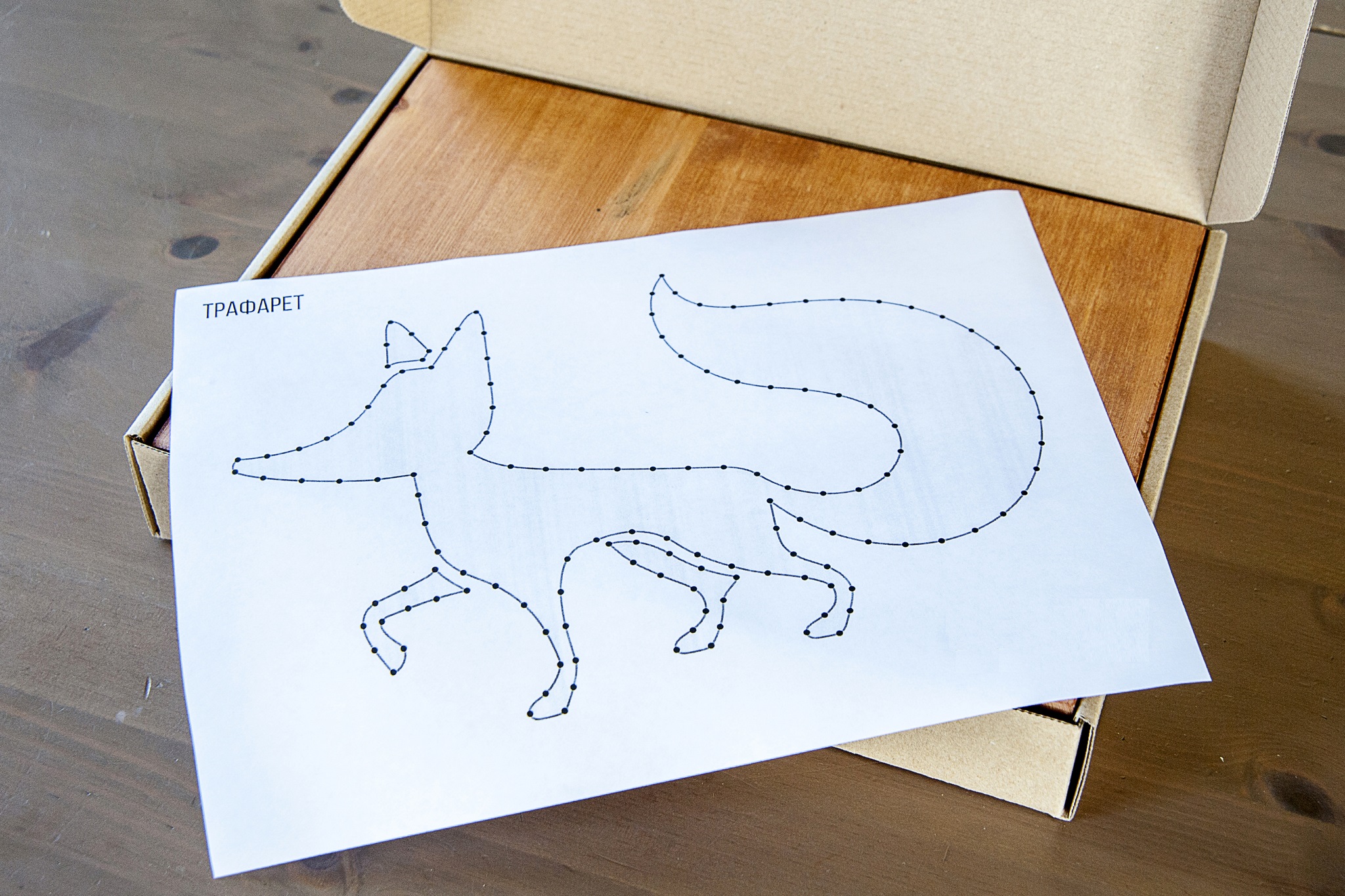

Video

